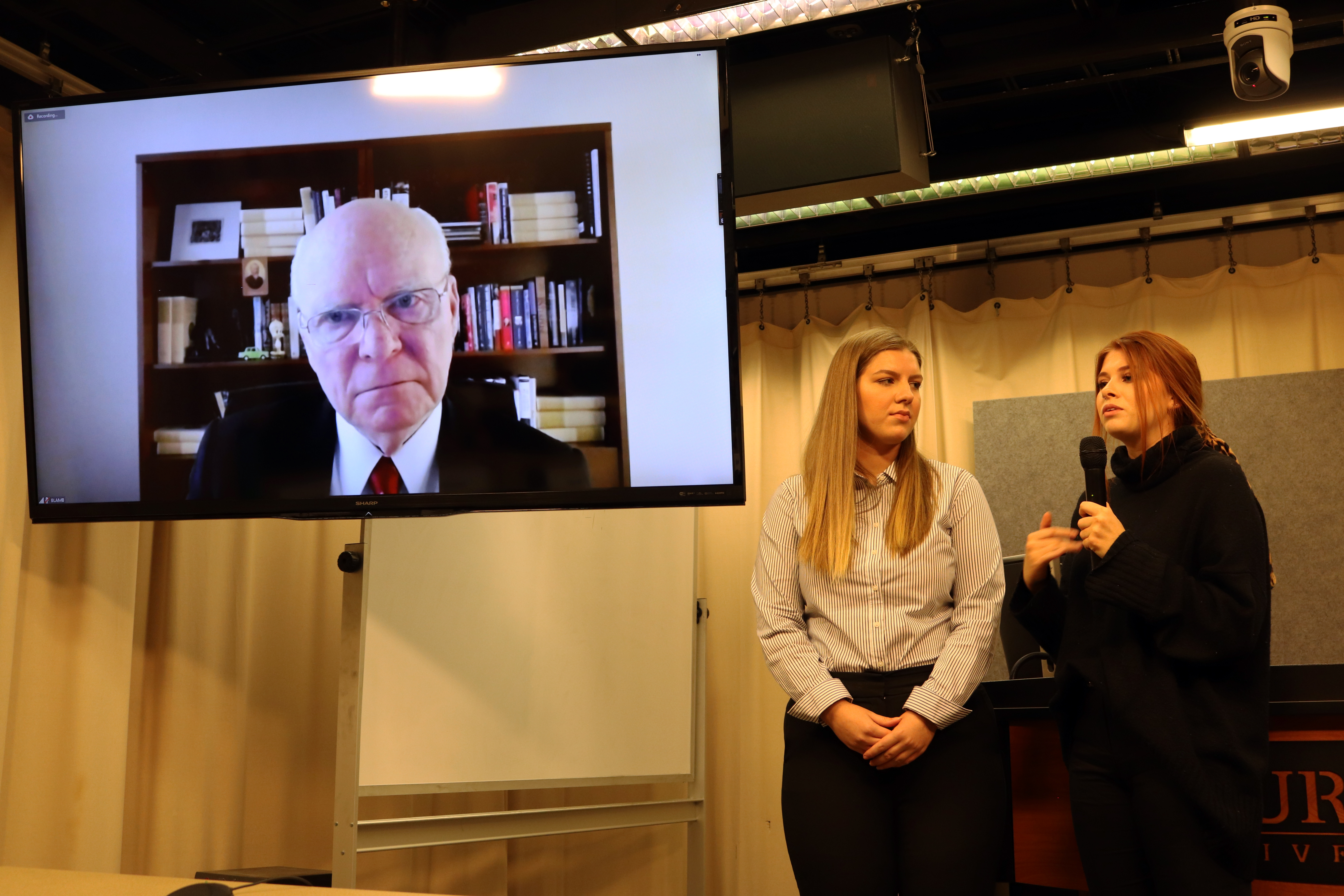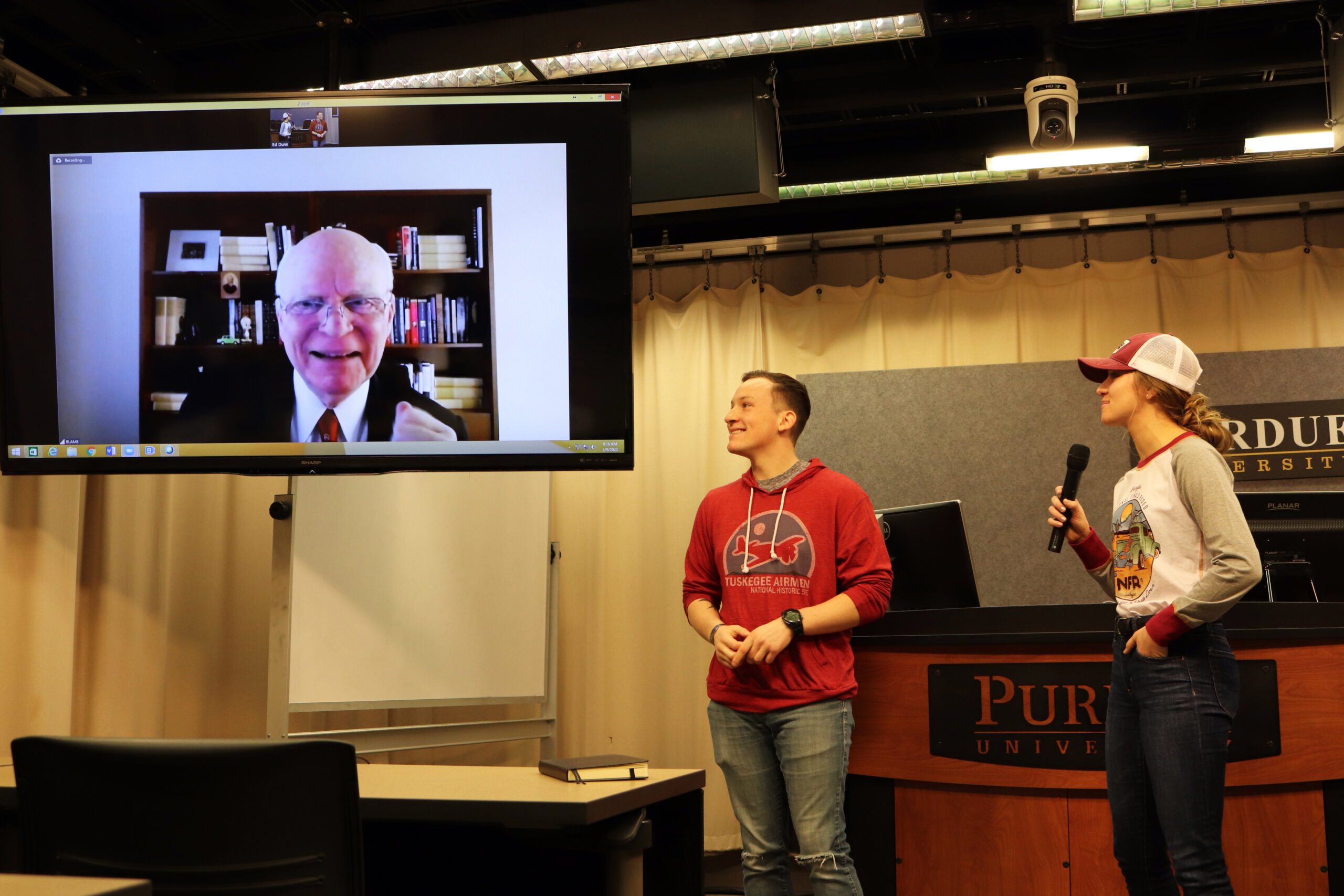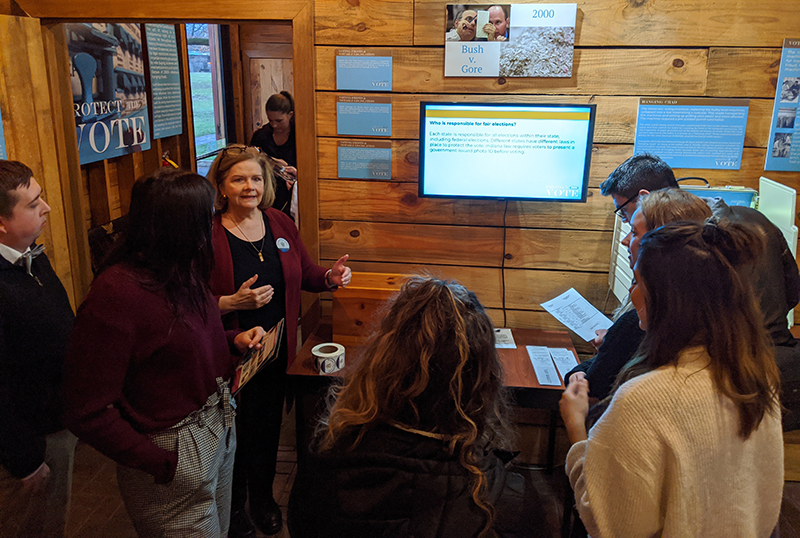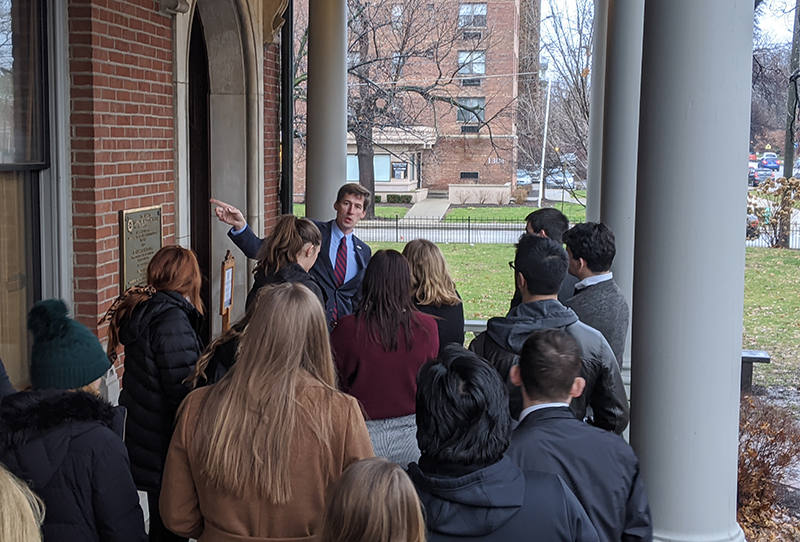How presidents communicate
C-SPAN’s Lamb teaching students about presidential methods of communication

Not only has Brian Lamb visited the gravesite of every deceased U.S. president, he has also seen every vice president’s burial site with his own two eyes.
Reading about and viewing photographs of these historic sites was not sufficient for the C-SPAN founder. So of course Lamb felt motivated to provide experiential learning opportunities to students when he taught his first full-fledged course at his alma mater.
“I’ve always been personally dedicated in the education world to experiential learning and giving people the opportunity to touch and feel and see things in person instead of just reading it in a book,” said Lamb, the 1963 Purdue graduate for whom the School of Communication is named.
That premise guided the curriculum choices Lamb and longtime C-SPAN co-worker Connie Doebele made when determining how to connect with students in their Presidential Communication in an Election Year (COM 495) course this spring. In addition to their weekly classroom discussions – Lamb participates via video chat from his home base in Washington, D.C. – students also scheduled visits to three historic presidential sites over the course of the spring semester.
They took a class trip to the Benjamin Harrison Presidential Site in Indianapolis within the first few weeks of the semester and also had visits planned to the Abraham Lincoln Presidential Library and Museum in Springfield, Illinois, and Gerald R. Ford Presidential Library and Museum in Grand Rapids, Michigan, where they were to meet presidential historian Richard Norton Smith.

Using "The Presidents" (PublicAffairs, 2019), a book Lamb co-wrote with C-SPAN co-CEO Susan Swain, as a reference, each week the students have learned about how presidents utilized the media and other forms of communication through the years to deliver their messages to the American public.
“I think it’s good for all the students to have a historical grounding for presidencies of different eras,” said COM 495 student Ryan Wettschurack, a junior in political science and history. “I think we’re so caught up in the modern era – so post-World War II – and with all the different changes in media like television and now social media. But these earlier presidents like Benjamin Harrison and Teddy Roosevelt pioneered print media in tons of new ways that we don’t think about because it feels like it was so long ago.”
Class discussion and participation are responsible for 40% of the students’ final grade. Through their classroom conversations and experiments with new media platforms like podcasting, Lamb and Doebele want to inform students about the ways presidents used the media and encourage them to evaluate their own consumption habits.
“A big goal in the class is learning how to read your news and how to consume your news. Not just read, but listening to it, as well,” said Andie Slomka, a sophomore in genetics and political science. “Brian gets up at like 4 o’clock every morning and reads tons and tons of news. He was like, ‘OK, you guys need to get a newspaper subscription to a major newspaper and we’re going to discuss them. I expect you to know what’s going on in the world and to have a little bit of background on these papers and on the sources of information that you’re getting: where their biases lie, where their money comes from, everything like that.’ ”
Without that understanding, it is far too easy for news consumers to drift into ideological siloes where they unknowingly fail to access a diversity of perspectives on an issue. In his own daily routine of ravenous news consumption, Lamb has determined that no one network or publication can claim exclusive ownership of the truth.
“Every day I get up and I read a New York Times editorial and I read a Wall Street Journal editorial. I get up every morning and I go to The Daily Beast and then I go to The Daily Caller,” Lamb said. “When I get up in the morning and I’m exercising, I watch CNN, MSNBC, and Fox. No one side has the knowledge or the perspective, in my opinion, that would allow you not to look at the other side. That’s part of the reason we’re so polarized is that people only look at their own side.”

Lamb and Doebele worked together for decades to provide the American public with apolitical access to the inner workings of their government on C-SPAN. Both TV veterans have considerable experience sharing the C-SPAN gospel in college classrooms, as well, although this is their first time either of them has taught a full university-level course.
They picked a unique time to launch their teaching careers, as this has been a semester unlike any other. After Purdue shifted to remote learning in mid-March because of the COVID-19 pandemic, students have instead attended class via the Zoom video platform. Doebele said the unique circumstances "during this critical time [that] could never have been anticipated" provided an "amazing" opportunity to discuss presidential communication.
Doebele believes her unique background as a producer, on-air host, and documentarian at the public affairs network provided unique preparation to engage with an audience in this new way.
“Brian didn’t teach the rest of us how to do it, we just kind of watched him and knew that we were honing the C-SPAN way of being on the air and being questioners,” said Doebele, who now serves as managing director of the Center for C-SPAN Scholarship & Engagement at Purdue. “So the idea is really the same in front of these students: to engage, bring them out, figure out what they know and don’t know, throw in some tidbits, tell stories.”
By the end of the semester, the information, tidbits, and stories that Lamb and Doebele convey will have given their students a better understanding of how to scrutinize the deliverer of the presidential messaging and the mediums they used to facilitate these communications.
“The core is that on the level of presidents and communication, these students walk away with something much broader than, ‘Let’s talk about President Trump’s latest tweet.’ To be honest with you, that’s not what this course is about,” Doebele said. “This course is really about looking back at history and seeing the presidents who have made huge expanses in communication, both with the media and with the American public in different ways, and how they did it.”
